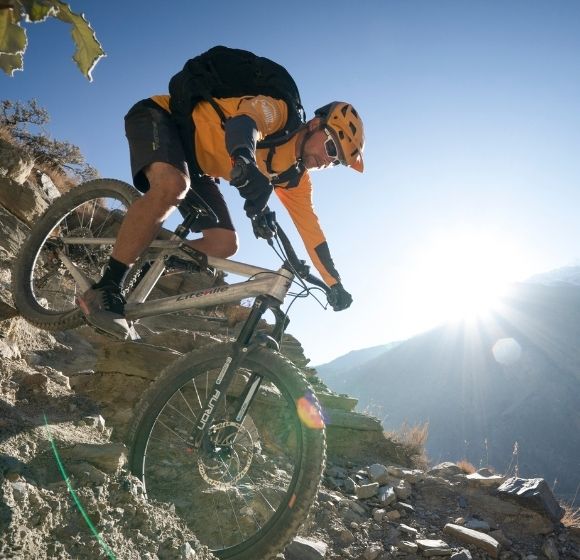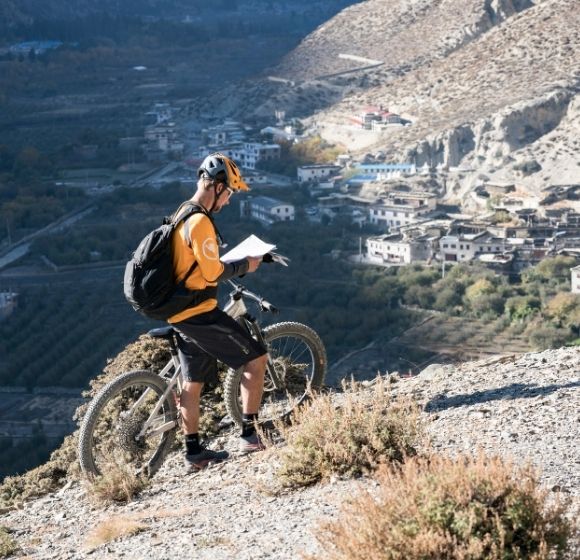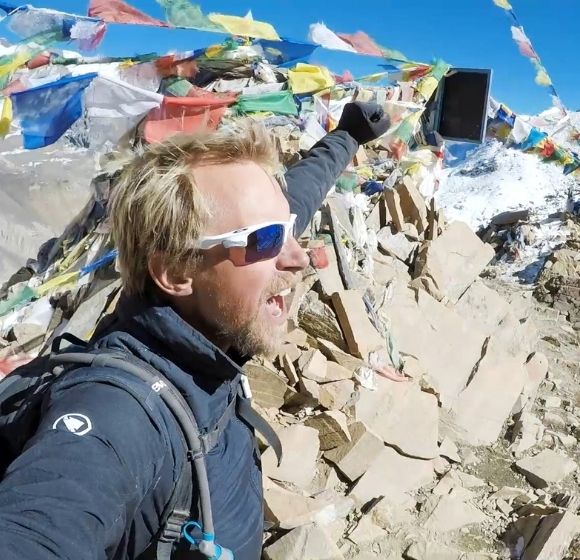
HARALD PHILIPP
True Adventures
Mountain bike adventuring is Harald Philipp’s profession. He’s cycled across the glaciers of Monte Cevedale in the Dolomites, ridden extreme karst trails in the Bavarian Alps and tackled sky high climbs in the Brenta Dolomites and the Karwendel mountain range.
In his new book, “Pfadfinder” [EN: Scout] due to be published in early 2019 Harald admits: “The problem with me constantly living on the edge is that one day I could find myself in situations which might kill me.” This problem has prompted him to go on adventures which do not necessarily require an absolute adrenaline kick. These adventures have made him realise:
You don’t need to push your limits constantly to experience great, enriching adventures.
The Pfadfinder project naturally led Harald to look towards the Himalayas. The sheer size of the mountain range is breathtaking and make the Alps seem like mere hills. Could the Himalayas also be a paradise for mountain bikers? Harald couldn’t get the thought out of his head and started researching the trip early in 2015. He found images of dusty trails in front of high glaciers, green rice terraces, idyllic villages and colourful prayer flags under deep blue skies. Exactly what Harald was looking for.
Planning started in earnest with the help of German trial rider Tom Öhler and Nepalese mountain bike guide Mandil Pradhan. After many Skype conferences, countless emails and spending hours on Google Earth the expedition style trip was ready. They were planning to travel from Gosainkund in the Langtang National Park all the way to Kathmandu, accompanied by two guides and a five strong support team.
However, the conditions on arrival were a disappointment. It was the time before the monsoon and smog hung over the southern Himalayas like a sepia toned filter. This was also the case in the mountains. Travelling with a support team also proved to be challenging as it meant spontaneous route changes were out of the question.
Three days later the caravan continued their journey up the Laurabina pass at 4,650 metres. At this point Harald thought that it would only go downhill. Far from it... The supposed dream seemed to be turning into a nightmare.Only the last 400 metres on Mandil’s local trails in Kathmandu could lift Harald’s spirits. Too little too late.
Disillusioned and frustrated he started heading home. He quarrelled with himself and his aims. “Didn’t I want to go cycling where no one else has before? Didn’t I want to experience pure, wild Nepal?” he asked himself. “I got exactly that.” Slowly but surely he started to realize: “All those disappointing experiences were just the answer to my arrogance with which I had started project Nepal. I thought I could do everything just like at home in the Alps. I pretended everything would be exactly the same but bigger and more beautiful.”
All those disappointing experiences were just the answer to my arrogance with which I had started project Nepal. I thought I could do everything just like at home in the Alps. I pretended everything would be exactly the same but bigger and more beautiful.
He also started to understand: “Web images can be misleading. Everything is picture perfect. And we want to experience everything just like that. The contrast between reality and my imagination led to a dangerous experiment and false expectations. If I had started this trip without this imagination everything could have been different”.
A year and a half later he found himself on another trip to Kathmandu together with his long-time friend Martin Falkner. Martin had never been to the Himalayas. However, the way he looked at the project impressed Harald. Instead of having unrealistic expectations, Martin was just curious. “It makes absolutely no sense to climb up high peaks just because you are able to climb them.” He started choosing his destinations more carefully. And hey presto, his dream became a reality. The very first trip to the Annapurna region was everything he had missed on his first tour: dusty trails, treeless mountain landscapes with giant white mountain ranges in the background, green rice terraces and monasteries with prayer flags.
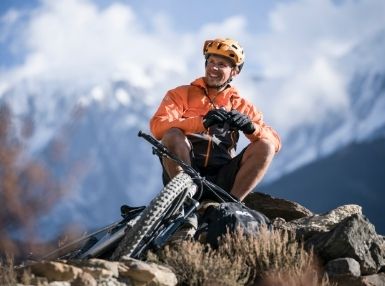
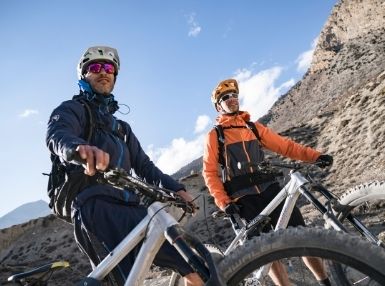
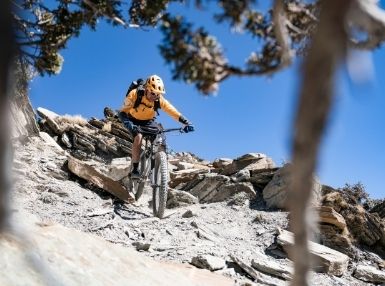
It was as if Harald had been rewarded for his humbleness. He began to realize: “It’s about being open, about just letting things happen. Of course, great landscapes, perfect trails and idyllic villages seem to have a luring effect on us. Sometimes you have to break the rules to be rewarded with a great adventure.” Together with Lila, a Nepali who had worked at Martin’s cabin in Austria, they travelled even further into the Himalayas. Villages in the Dolpo region can be up to 4,300 metres high and are part of the highest permanently inhabited regions worldwide. From these villages only small paths lead further into the mountains.
It’s about being open, about just letting things happen.
With Lila’s help they found routes with accessible paths. They climbed up trails all day long and still they did not feel like they’d reached the top. Sometimes it felt like a never ending story. Even when Harald developed mountain sickness he did not lose his nerve. On one of these remote paths Harald realized that true adventure lies within the people you meet along the way. In the old man who silently sat next to Harald and smiled and it was like they had known each other forever. In the cheering children who ran after Harald just to swing on his bike. And in the family in the mountain village of Kageni whose kitchen was Harald’s and Martin’s home for a few days.
“If I had wanted the usual adrenaline adventure I could have stayed at home in the Alps,” says Harald. “Dolpo, on the other hand, was one of the most impressive trips of my life.” This is not surprising because these trips are much more than just adventures for Harald, they are lifetime experiences.
More information on Harald Philipp's Pfadfinder Adventures here.
Footnotes Words by Christian Penning (translated by Endura), Photos by Stefan Voitl Nepal
© 2021 ENDURA
